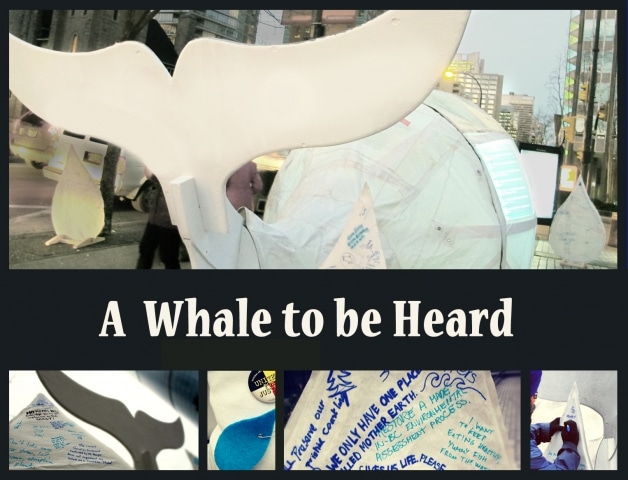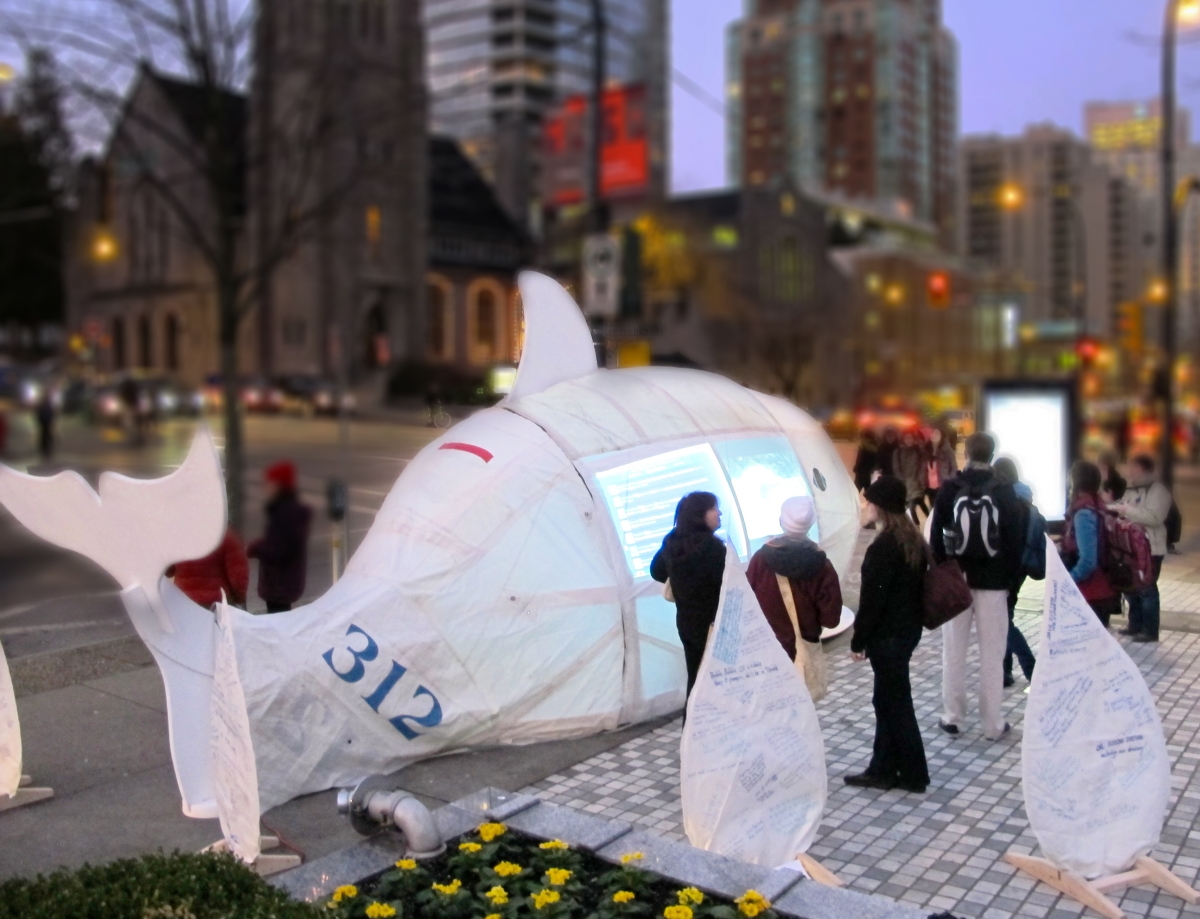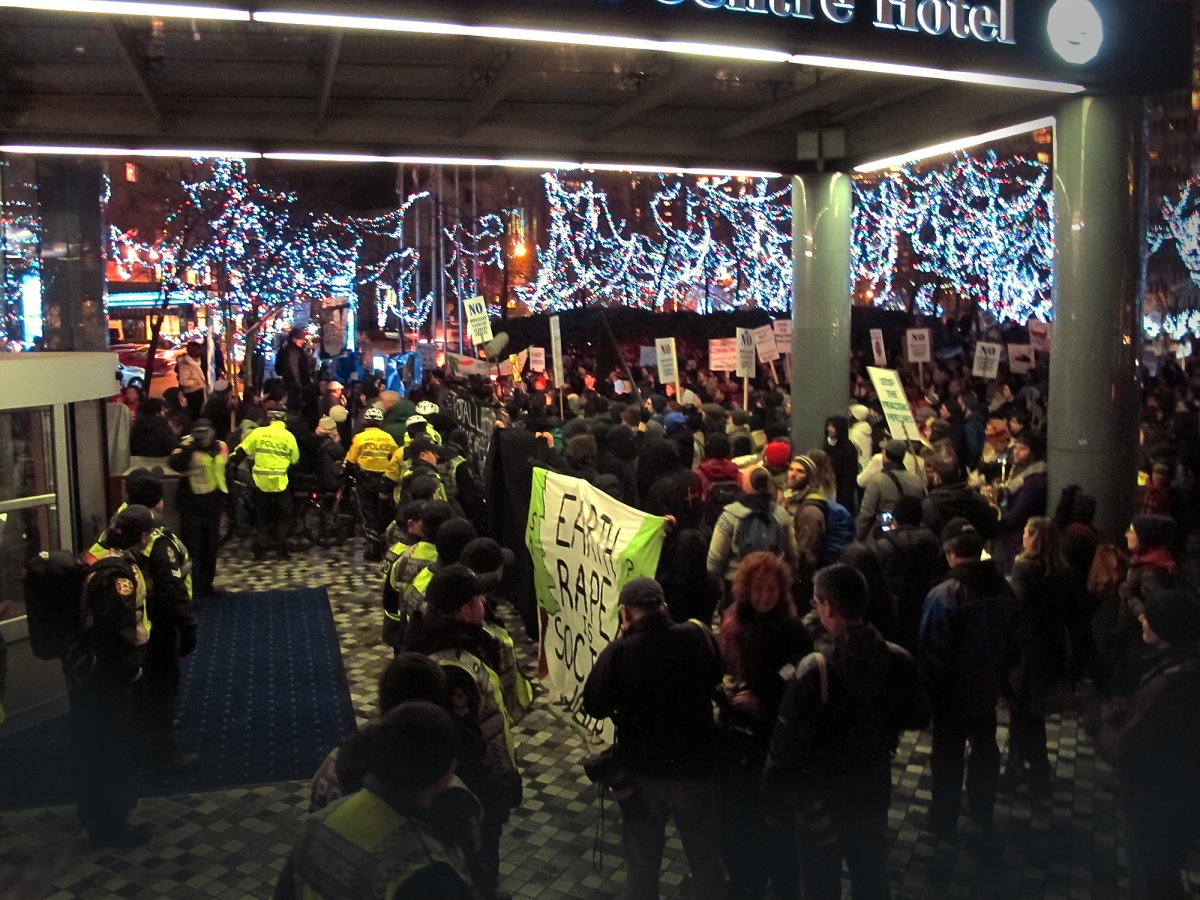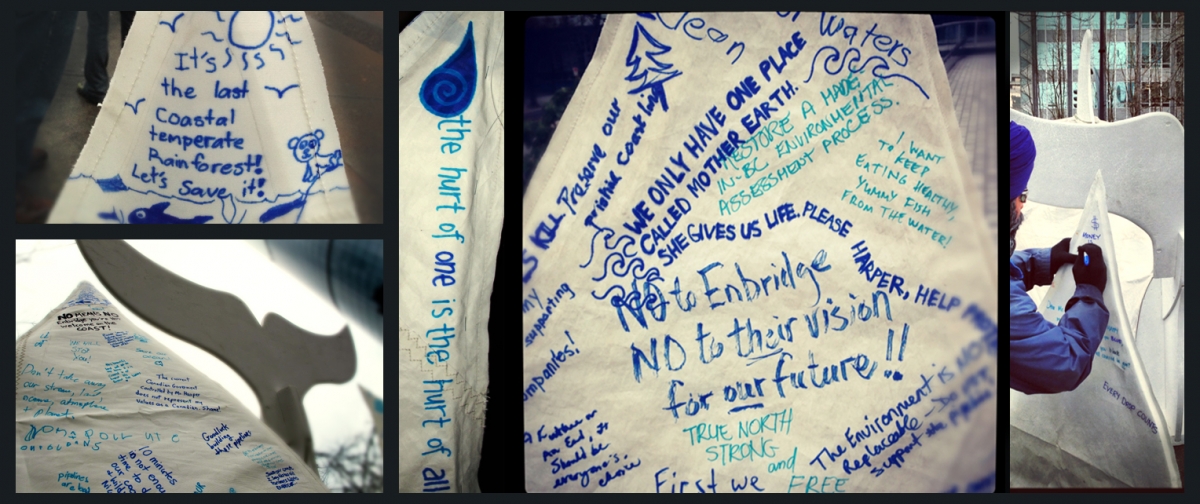by JODI STARK, one of the independent artists who created Hope the Whale, and an environmental public engagement specialist.
The most striking part of Enbridge’s Northern Gateway community hearings in Vancouver is that they’re not open to the community at all. Only a limited number of people get to present their position to the federally appointed Joint Review Panel, and the rest of the public aren’t welcome to watch them, despite thousands of Vancouverites who are passionate about this proposed pipeline and what it means for our future.
In response, a group of Vancouver multimedia artists have built Hope the Whale, an interactive art installation designed to allow anyone the opportunity to have a voice. The 25-foot whale, surrounded by a dozen large water drops, is set up in downtown Vancouver outside the Wall Centre where the proceedings are taking place. This collaborative art project, supported by First Nations and conservation organizations, is engaging the public in a welcoming and inclusive way – much the way we would expect a public process to be run.
The most egregious part of the so-called public hearings in Vancouver is the fact that, as in Victoria, the public is being denied access and can only view them via video from a satellite location a few kilometers away, or by listening to an audio webcast. The inclusivity and accessibility of the Enbridge Northern Gateway review process was already in question, given that concerned citizens were required to register to speak more than 15 months ago, and the number of hearing locations were limited. But the exclusion of any audience tips the scale away from it being an acceptable public process.
In fact, the BC Civil Liberties Association (BCCLA) is challenging the decision to close the hearings to the public, affirming that “Canadian courts and tribunals, such as the National Energy Board, are bound by law and the constitution to be open to the public so that the public can see how decisions that affect them are administered”. Keeping the public out of the hearings is a violation of the open court principle and potentially unlawful, according to the BCCLA.
And yet the federally appointed Joint Review Panel convened the hearings in a closed room on the evening of Monday, January 14, in downtown Vancouver. Without the public in attendance, the presentation room felt vacant and cold. Other than the three panel members and the first three presenters, there were only a handful of media and a few staff in the stark room.
Just as the panel was formally initiating the proceedings, a quiet rumble was heard from outside. The rumble quickly turned into a booming roar and, even four floors up in the Wall Centre, it was undeniable that a very large and loud demonstration was underway outside. The staff awkwardly and hurriedly drew the curtains, as if they hoped it would muffle the sound or even magically make the protest disappear.
But it was going to take a lot more than that to squelch this protest. Though the opinion of the thousands of protesters will never get formally incorporated into the public review proceedings, the panelists heard them, whether they liked it or not.
It’s fair to say that banging on pots, pans and drums is not the most articulate way to engage in public discourse. But the fact that there is an increasing number of people and movements resorting to this type of communication with Canadian authority is indicative of the government’s suppression of public opinion. When you try to silence people for too long, eventually they’ll just start screaming.
Juxtaposed with this noisy demonstration was Hope the Whale, who was born from the desire to give voice to those shut out from the Energy Board’s process. Quietly, people were leaving their message of hope and vision for a healthy future on the large water drops surrounding the whale. Videos, photos and tweets were also projected onto the whale at night, allowing the public to witness and appreciate what we are fighting for, rather than just focusing on what we are against.
This creative project is one of many artistic and physical expressions of opposition to the pipeline, which include films about those who have traveled the route of the pipeline by foot, bike, raft and kayak; surfing the Great Bear Rainforestpaddleboading the proposed tanker routeworld-class photographsrenowned Canadian artists, to name just a few.
The diversity and creativity of projects opposing this pipeline in B.C. demonstrates that the opposition isn’t an easily marginalized group of extreme protesters. The opposition crosses age, geographic and political boundaries.
Opposition to the Enbridge Northern Gateway pipeline is now firmly rooted in British Columbian culture. And, once a position like this gets ingrained into the culture of a people, they will defend that position as if it’s their very identity that’s under threat.
Hope the Whale will remain at the corner of Burrard & Nelson until Friday afternoon, when the first portion of the Vancouver community hearings wraps up.
Subscribe to our newsletter
Stay up to date with DeSmog news and alerts









